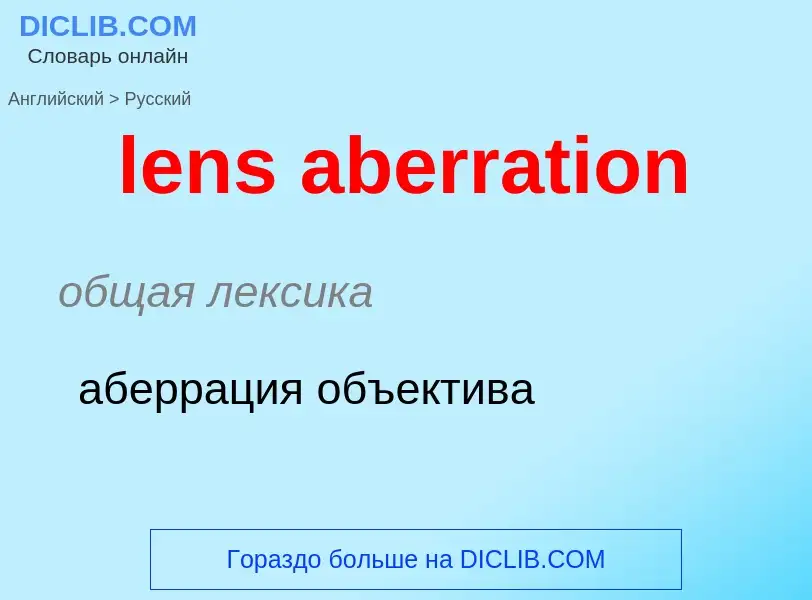Vertaling en analyse van woorden door kunstmatige intelligentie ChatGPT
Op deze pagina kunt u een gedetailleerde analyse krijgen van een woord of zin, geproduceerd met behulp van de beste kunstmatige intelligentietechnologie tot nu toe:
- hoe het woord wordt gebruikt
- gebruiksfrequentie
- het wordt vaker gebruikt in mondelinge of schriftelijke toespraken
- opties voor woordvertaling
- Gebruiksvoorbeelden (meerdere zinnen met vertaling)
- etymologie
lens aberration - vertaling naar russisch
общая лексика
аберрация объектива
общая лексика
годичная аберрация
Definitie
1) Растение семейства бобовых со съедобными плоскими округлыми бобами.
2) Съедобные зерна такого растения.
2. ж.
Певчая птица семейства вьюрковых.
Wikipedia

In optics, aberration is a property of optical systems, such as lenses, that causes light to be spread out over some region of space rather than focused to a point. Aberrations cause the image formed by a lens to be blurred or distorted, with the nature of the distortion depending on the type of aberration. Aberration can be defined as a departure of the performance of an optical system from the predictions of paraxial optics. In an imaging system, it occurs when light from one point of an object does not converge into (or does not diverge from) a single point after transmission through the system. Aberrations occur because the simple paraxial theory is not a completely accurate model of the effect of an optical system on light, rather than due to flaws in the optical elements.
An image-forming optical system with aberration will produce an image which is not sharp. Makers of optical instruments need to correct optical systems to compensate for aberration.
Aberration can be analyzed with the techniques of geometrical optics. The articles on reflection, refraction and caustics discuss the general features of reflected and refracted rays.





![γ Draconis]] and [[35 Camelopardalis]] as reduced by Busch to the year 1730. γ Draconis]] and [[35 Camelopardalis]] as reduced by Busch to the year 1730.](https://commons.wikimedia.org/wiki/Special:FilePath/Bradley's observations of γ Draconis and 35 Camelopardalis as reduced by Busch.jpg?width=200)



